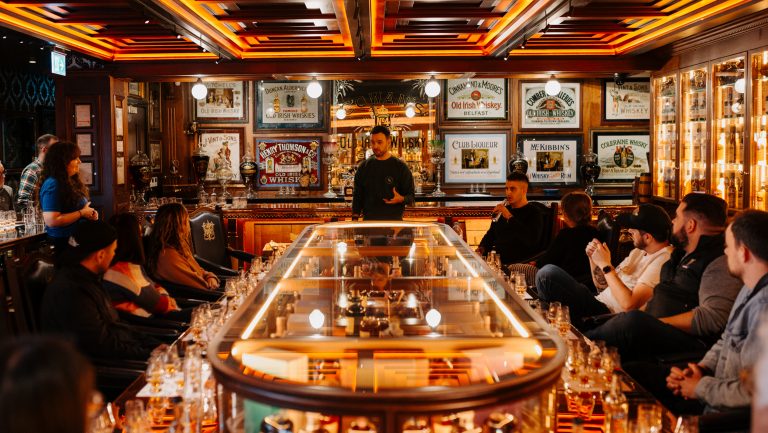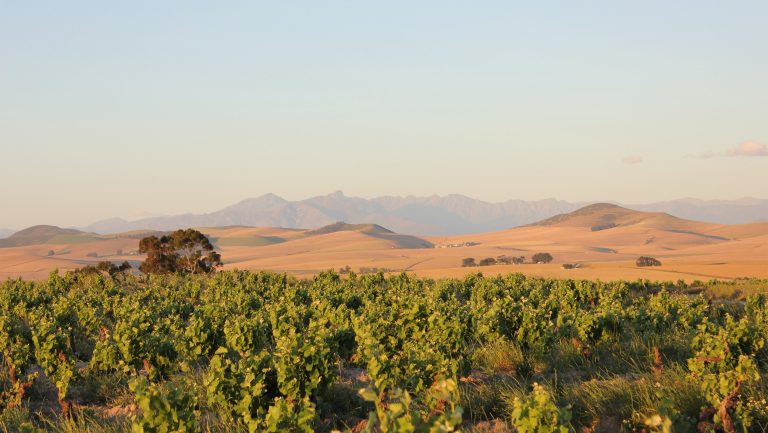Where Irish whiskey is mentioned, the term “renaissance” is never far behind. While it has experienced nearly two decades of growth in the U.S. market, it’s only in recent years that the breadth of modern distilleries and brands have begun to fill the shelves of bars and retailers across the country.
But now in 2024, Irish whiskey faces an identity crisis. Irish whiskey exports fell 14 percent in 2023, for the first time, and were specifically affected by a decline in shipments to the U.S., its largest market—the category needs to solidify its consumer base and galvanize growth.
But how to do that? While Jameson dominates sales, many Irish producers and brands focus their efforts on making or marketing Irish whiskey in one of its four main styles: malt whiskey, pot still whiskey, grain whiskey, and blended whiskey. Each of these comes with a raft of complicated distilling jargon and specifications which can alienate the consumer—especially a drinker new to the category.

Don’t miss the latest drinks industry news and insights. Sign up for our award-winning newsletters and get insider intel, resources, and trends delivered to your inbox every week.
Having worked across the category for 12 years, in hospitality, education, specialist retail, with global and craft brands, and currently as the director of Irish whiskey for The Dead Rabbit, I would argue, these definitions often hinder rather than illuminate Irish whiskey’s development. Its growth potential hinges on how it is presented to consumers, and the category can be hampered by a lack of clarity about what makes it truly unique. There needs to be a new story told, and I think it’s grounded in the breadth of Irish whiskey itself.
How to Differentiate Irish Whiskey in the Market
Many believe that individual Irish whiskey styles hold the key to its market differentiation. Just as single malt whiskey is globally recognised as a symbol of quality, thanks to Scotch’s success, some argue that pot still whiskey, being unique to Ireland, should be similarly championed for its use of unmalted grains. We’ve also heard how grain whiskey serves as a great alternative to bourbon.
These points are valid but fail to propel the category forward as a whole because they require a nuanced understanding of each distinct style. A consumer would need to understand that to qualify as a pot still whiskey, it must be distilled in pot stills and made with at least 30 percent malted barley and 30 percent unmalted barley, with or without up to five percent of other grains; and similarly to understand the definitions for malt and grain whiskey. That’s a lot of information to take on rather than just appreciating Irish whiskey more broadly as a place of innovation and excitement.
Those working in Irish whiskey have been caught up recently in arguments to change the definition of pot still Irish whiskey. Key figures from Blackwater Distillery and Killowen Distillery have openly spoken out about how the current technical file inhibits the category, while representatives from the Ardara Distillery and Waterford, amongst others, have pointed out that the category can be quite confusing. The arguments are consistent: Producers want to make the specifications more historically accurate by allowing for a higher percentage of other grains such as oats, wheat, and rye.
Dominated by large, well-known brands, Irish whiskey is seeing growth among super-premium expressions and focusing on sustainable ways of doing business

The State of Irish Whiskey
This is a fair argument and has been proven by Irish whiskey historian Fionnán O’Connor beyond doubt. He has shown how through the 18th,19th, and early 20th centuries, it was absolutely the norm for pot still whiskey-producing distilleries to lean heavily on oats, wheat, and rye, with levels consistently up to 30 percent. While I agree that the technical file should be updated to allow for a more historically accurate distillate to be produced, I feel that we should be looking above and beyond these narrow definitions when it comes to how we communicate with the world on Irish whiskey.
Rather than delving into the intricacies of these styles and their long histories, the key lies in embracing the broader essence of Irish whiskey. Let’s demystify its potential; its core definition allows for any distilled spirit produced in Ireland, made from malted grain (with or without other grains), matured in wooden casks for a minimum of three years and bottled at no less than 80 proof to be called Irish whiskey.
All of the full-flavored, rounded, robust, characterful whiskeys that are being produced, regardless of their supposed style, whether double or triple distilled, whether distilled in copper pots, column stills, or hybrid stills, whether matured in oak or other woods, they can all be called Irish whiskey. We should be championing just that fact. That’s our superpower; that’s how we will continue to win the hearts, minds, and palates of consumers.
Producers Exploring Irish Whiskey’s Full Potential
We are already creating a wondrously diverse palate of flavors that no other whiskey-making country can compare with. A number of producers are putting their stamp on flavor profiles that take advantage of these variables. Sliabh Liag Distillery produces an abundance of peated Irish whiskey—reconnecting with Ireland’s lost history of producing peated whiskey—at their Ardara Distillery in County Donegal alongside bottling the ever-smoky Silkie Irish Whiskey range.
Waterford has pushed the boundaries arguably further than anyone by producing both organic and biodynamic whiskeys that showcase the very best of Irish barley and the farmers that produce it.

Smaller independent distilleries such as Shortcross, Micil, Blackwater, and Killowen are producing a multitude of distillates embracing oats, wheat, and rye, alongside both malted and unmalted barley, both peated and unpeated. Boann does the same on a much larger scale, and Church of Oak takes this a step further in a multigrain distillery that has the capability to push the percentages of grains to different levels, so it can, for example, maximize the influence of tougher grains such as rye and oats.
Even Midleton Distillery, the Pernod Ricard Irish whiskey distilling giant that produces Jameson, is embracing the depth of possibility of Irish whiskey with its Method and Madness range, showcasing woods such as chestnut and cherry, with distillates honing in on malt and rye. They’ve also taken rye a step further with their Powers Irish Rye release that is taking the U.S. by storm.
County Clare native Louise McGuane revived the practice of bonding when she launched JJ Corry, sourcing the most promising new-make spirit from across Ireland and aging it in her incredible library of casks from around the world. WD O’Connell Whiskey Merchants and Two Stacks followed suit, and through cask bonding we’re seeing the creation of new flavours with every release, blending distillates from many distilleries and continuing to compound the category’s depth.
And with all those examples of innovation—cataloguing some of the most progressive distilling techniques in the country right now—there’s not one mention of a specific style. Let’s cut through the myths and the confusion of Irish whiskey’s many styles. We need to build an exciting industry that thrives on the diversity and flavor of the category as a whole, and those willing to explore its potential with an abundance of grain, wood, and character. If we do all this, the growth will keep coming.

Dispatch
Sign up for our award-winning newsletter
Don’t miss the latest drinks industry news and insights—delivered to your inbox every week.
Hailing from Donegal, Ireland, Mark is a brand strategist and a leading voice on Irish Whiskey education, working across hospitality, global, and craft brands. He oversees the Irish spirits selection at The Dead Rabbit and leads the continued development of their world leading Irish Whiskey Genius program.







